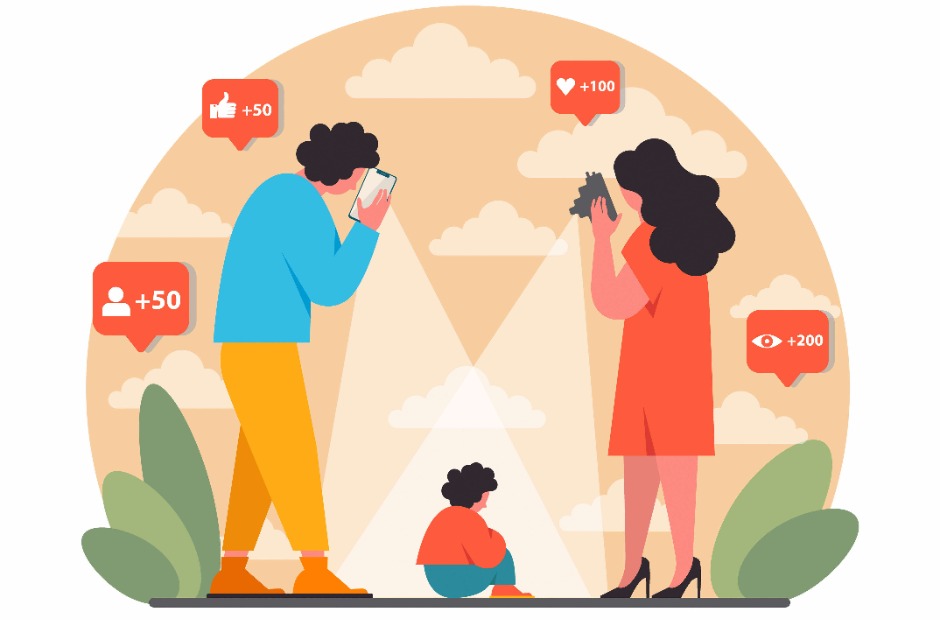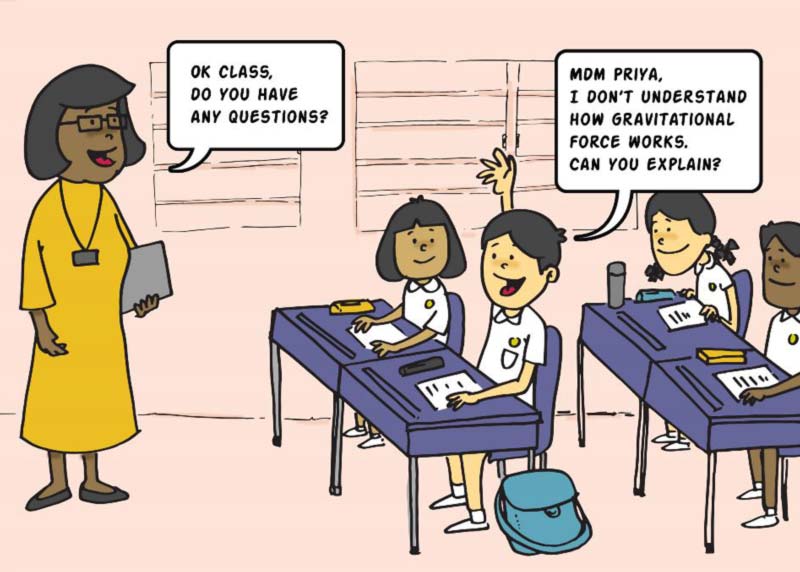For many parents, capturing and sharing their child’s milestones online has become second nature. From pregnancy to the delivery room, their baby’s first steps to the first day at school, these snapshots of every day moments have been widely documented through blogs and social media posts.
In 2022, the word “sharenting” was added to the Oxford English Dictionary, highlighting the growing prevalence of the social phenomenon. The term is used to describe the habitual use of social media to share news, images or videos of one’s children.
With over 5,000 followers on her Instagram account @growingwiththetans, Ms Adeline Tan, who also runs a parenting blog, is among a growing group of parents who have been sharing snippets of their parenthood journey online. She has an 11-year-old son and a pair of seven-year-old twins, and has been documenting their growing up years on her public account since they were born.
Ms Tan’s blog and social media presence have connected like-minded parents, who find her parenthood experiences relatable. Unfortunately, she has also faced some negative encounters.
Despite being careful to not disclose her children’s names and real-time locations, Ms Tan has received unsettling messages from strangers who took screenshots of her posts, claiming to know her children’s names and who they are.
“You never know who is out there looking through your profile and pictures, and what they will do with it,” she says.
As Ms Tan’s experience shows, sharenting has its risks. Decisions about how much to share can pose a dilemma for many parents: how can they safely celebrate the moments that matter in their child’s lives while keeping in mind the potential pitfalls?
Be aware of the potential risks
One important step in creating a safer online environment is to be aware of how it works. For example, did you know that with every image that is posted on social media, a “digital footprint” is left in its wake? This refers to a trail of data that one leaves on the Internet created as a result of their online activity, whether intentionally or unintentionally.
Across all primary schools, the concept of digital footprints is covered during the Primary 6’s Character and Citizenship Education (Form Teacher Guidance Period) CCE (FTGP) lessons. Through class activities and discussions, students are taught to be mindful of their online interactions and to make responsible choices in their online activities.
Sharing too many details could increase the risk of identity theft. Sometimes, even a seemingly nondescript Instagram story or Facebook post of your child at the playground after school may reveal personal identifiable information (PII) about them. For example, the location of a child can be inferred when they look up the address of the school, search nearby playgrounds and find the child there after school.
Finding a balance that works for your family
To protect their children’s privacy, some parents prefer to use private accounts, which can only be accessed by a select group of people. Mr Owen Tan, an educator who has three children aged five, three and one year, keeps his social media accounts in private mode and ensures that the photographs that he posts of his children are not compromising in any way.
“You never know what people out there will do with screen captures. My children are also going to see my (social media) posts when they are older. Will they cringe and feel embarrassed, or be appreciative of the opportunities to reminisce and walk down memory lane?” Mr Tan said.
Ms Gladys Wong, a Guidance Officer at the Ministry of Education, also echoed Mr Tan’s views. “I became more aware of how sharing embarrassing moments online might negatively impact a child’s self-esteem and sense of security, as they may feel embarrassed or ashamed of their past actions when they see those photos or videos when they are older. Worse if that photo or video leads to cyberbullying and harassment from other children.”
Privatising social media accounts is generally safer than having public accounts. However, it may not provide a complete control over one’s privacy. For instance, followers of a private account may still take screenshots of the posts and share them with others on various communication platforms. This means there is a chance that the data falls into the hands of persons with ill intent. That was what Ms Wong learnt after reading up extensively on the topic.
Like many parents, Ms Wong used to post photos of her son on her social media account, which is kept private and accessible only to family and friends. “I wanted to share my son’s milestones with my family members and friends. It is also nice to receive parenting tips, comments or support from peers who are fellow parents,” she says.
When Ms Wong first learnt about the potential risks of sharenting, she became concerned that it might compromise her child’s online safety and researched more about how social media works.
After speaking to her peers and reading up on safer Internet practices, Ms Wong discovered the “archive” function on Instagram, which enabled her to archive photographs on her feed and hide it from anybody even when the image is tagged to other social media accounts.
She was also introduced to a family photo app that allows her to track her child’s growth and milestones while allowing her to retain full control over who can access her photo album.
As for parenting blogger, Ms Tan, she adheres to a few principles when sharing photos of her children online. For example, images of her children in various states of undress are off-limits. She also does not post photos of them looking upset. When she is out with her children, Ms Tan posts on Instagram only after she leaves the venue, to avoid revealing their live location.
The mother-of-three also prioritises and respects her children’s preferences. When she takes a photo of her children and they ask her not to post it online, she honours their wishes – no questions asked.
“Private moments with your family should remain private and personal. It’s important to respect your children and for us as parents to safeguard their image,” Ms Tan says.
What to keep in mind when sharing online
1. Avoid revealing Personal Identifiable Information (PII)
One of the important things to keep in mind is to ensure that the post does not contain PII of your child that could compromise their safety. For instance, a child’s hospital tag may reveal their full name.
2. Avoid sharing child’s location
Avoid sharing live updates of your child’s location. When posting an Instagram story, consider leaving the location before updating your social media. Some electronic devices automatically tag the location of the photos taken with the camera app. To safeguard information of your location, turn off geotagging.
3. Think and think and think again before posting
The e-guide also advises parents to consider these questions before sharing online: Is my child in any state of undress? How will your child if he or she sees the content in the future? Is there anyone who should not see this post about my child, now or at any point in the future such as a potential employer?
So, as you craft your next social media post, take a moment to consider: Am I sharenting mindfully?






